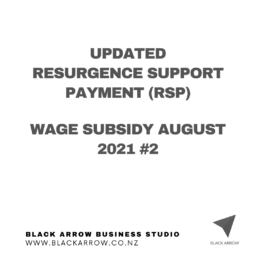
Assets tend to lose their value over time due to factors such as wear and tear or becoming outdated. In order to acknowledge this decline in value, depreciation is utilised to distribute the cost of assets like computers and vehicles over their useful lifespan.
When purchasing large assets for your business or working as a sole trader or contractor, depreciation is a technique used to distribute the cost over time. In your income tax return, you can seek a deduction for Inland Revenue-approved depreciation rates. This is akin to claiming expenses, but instead of claiming the entire cost of the item, you claim the annual amount it depreciates.
When it comes to taxation, assets that meet the following criteria must be depreciated:
- Owned by you or your business and available for business usage
- Cost more than $1,000
- Have an anticipated lifespan exceeding 12 months.
Assets related to intellectual property, such as patents and copyrights, are depreciable.
It is not possible to claim a deduction of the following:
- Assets you’ve elected to treat as not depreciable with Inland Revenue
- Trading stock
- Land (excluding certain fixtures or land improvements)
- Residential buildings
- Most intangible assets, such as goodwill
- Low-value assets (costing less than $1,000), which are fully written off upon purchase
- Assets where costs have already been deducted under another tax provision
- Assets that do not decline in economic value due to compensation for loss or damage
- Assets where the costs were or are allowed as a deduction under special provisions related to primary sector land improvements.
As part of your end-of-year accounts, depreciation is computed annually over the useful life of the asset.
To make the calculation, you will require the following information:
- The value of the asset
- Your depreciation method
- The Inland Revenue-approved depreciation rate.
Typically, the cost paid for the asset when you acquire it, or the market value of the asset when you begin utilising it for your business (in the case of introduced assets), is used to determine its value. Each year, the amount depreciating is subtracted from the value of the asset, resulting in what is known as the adjusted tax value.
If you are GST registered, use the GST-exclusive price of the asset to compute depreciation and claim a credit for the GST portion of its cost. If you are not GST registered, calculate your depreciation based on the GST-inclusive price.
You may choose between the following methods:
- Diminishing value: This method involves calculating depreciation as a constant percentage of the asset’s adjusted tax value. As a result, your deduction will decrease each year.
- Straight line: With this method, your asset will depreciate by the same amount each year, which is a percentage of its original cost price.
Note that you are not required to use the same method for all of your assets, but you must employ the same method for an asset throughout the financial year.
Calculating methods — Inland Revenue
Depreciation rates are established by Inland Revenue, taking into account the cost and useful life of the asset.
Rate finder — Inland Revenue
To determine an asset’s adjusted tax value and the amount to claim, multiply its cost by the depreciation rate.
Let’s take the example of a car that was purchased after 19 May 2015 for $30,000 (excluding GST). The chosen method for this asset is the diminishing value method, and the depreciation rate is 30%.
Year 1:
At the beginning of the year, the opening tax value of the car is $30,000. To calculate the depreciation for this year, we multiply the opening tax value of the car by the depreciation rate, which gives us $30,000 x 30% = $9,000.
Year 2:
The adjusted tax value of the car at the beginning of year 2 is $21,000 ($30,000 – $9,000 amount claimed in the previous year). To calculate the depreciation for this year, we multiply the adjusted tax value of the car by the depreciation rate, which gives us $21,000 x 30% = $6,300.
In conclusion, the total claimed over the two years for this car is $9,000 + $6,300 = $15,300.
It is essential to maintain precise records of the following:
- Your fixed assets, including evidence of purchase and sale.
- The depreciation claimed for each asset.
- The adjusted tax value of each asset (cost minus depreciation).
These records must be kept for at least seven years to comply with the relevant regulations
A guide for businesses — Inland Revenue
Are you struggling with accounting and business management for your business? We are here to help! Get in touch with us to discuss how our expert services can support your business’s success. Contact us today to schedule a free consultation and see how we can add value to your operations.















